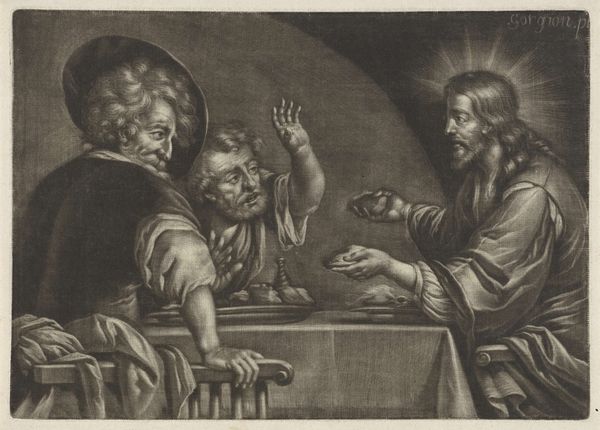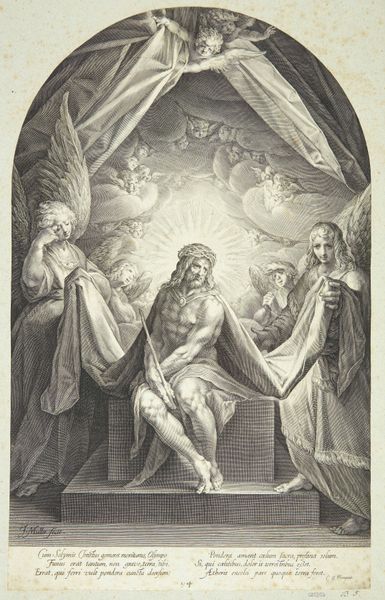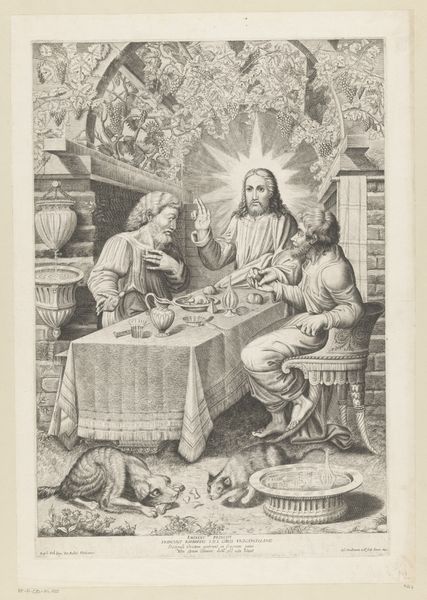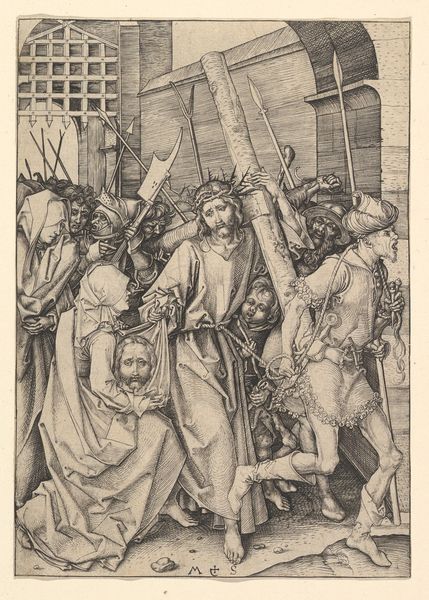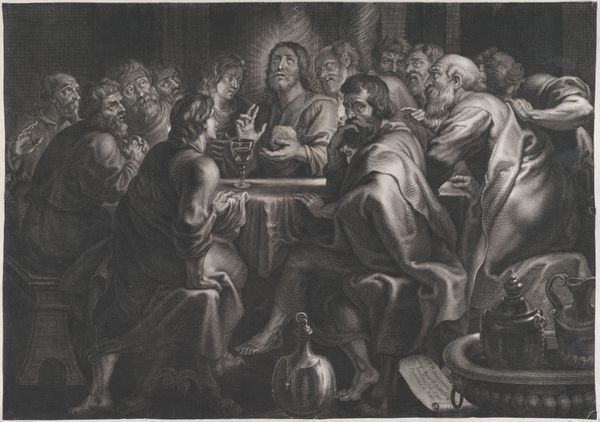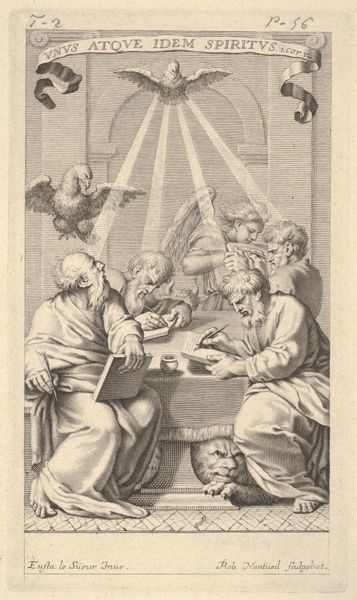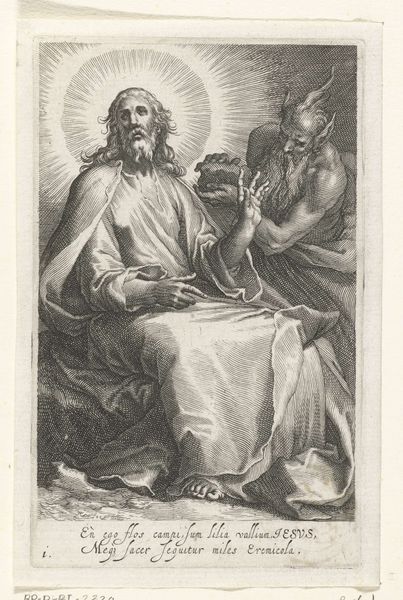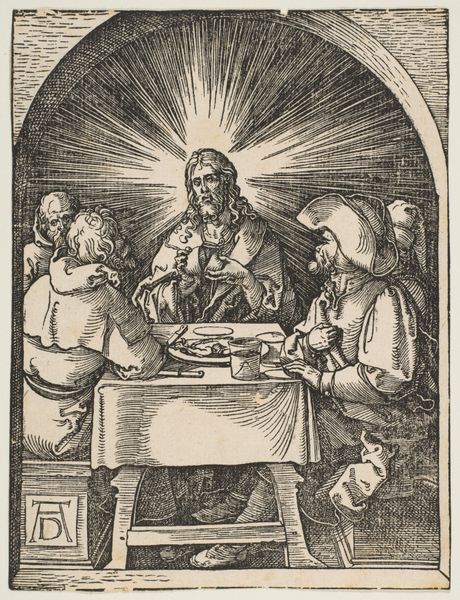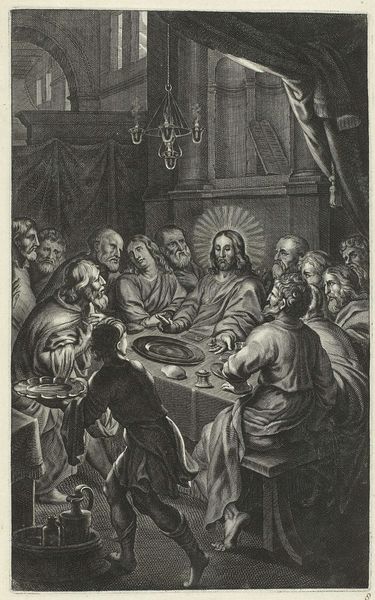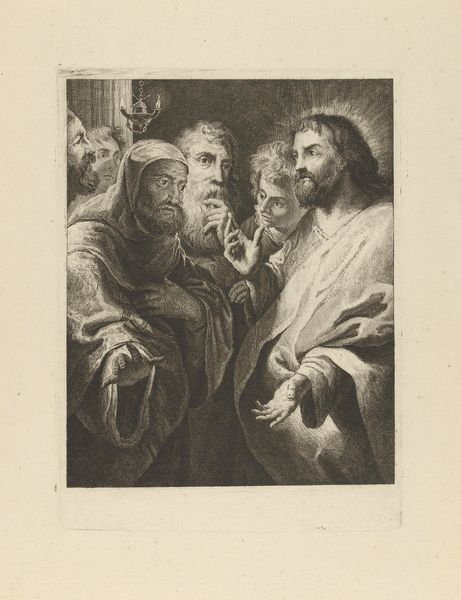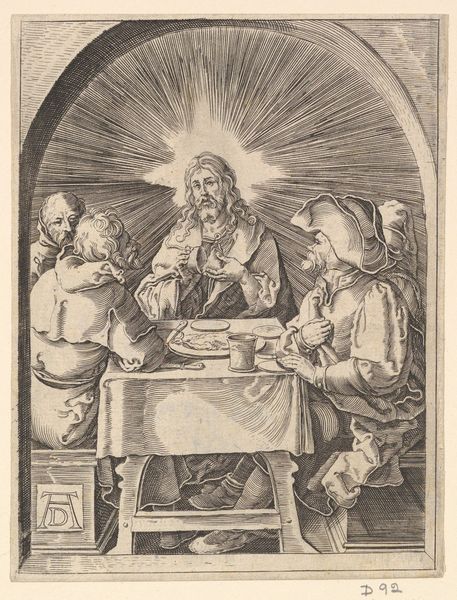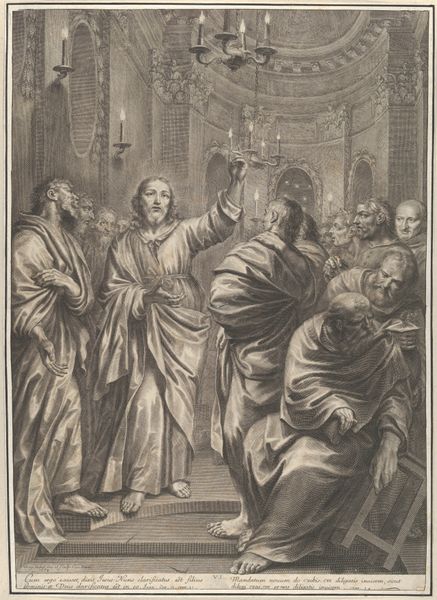
print, engraving
# print
#
figuration
#
line
#
genre-painting
#
history-painting
#
northern-renaissance
#
engraving
Dimensions: 418 mm (height) x 313 mm (width) (bladmaal)
Jan Harmensz. Muller created this engraving of the Last Supper sometime between 1589 and 1628. Consider how Muller uses the dramatic lighting and close cropping to create a sense of tension. Painted in the Netherlands, the print reflects the religious and social tensions of the time. The Protestant Reformation challenged the authority of the Catholic Church and the proliferation of printed images played a crucial role in disseminating new ideas. Protestant reformers often turned to printmaking to challenge the excesses and corruption they saw in the Catholic Church and its clergy. At the same time, this print also demonstrates the enduring appeal of religious subjects. While Protestantism was on the rise, many artists continued to find inspiration in biblical stories and themes. To truly understand this print, we can explore the religious history of the Netherlands, and the history of printmaking and the art market. By exploring these resources, we can gain a richer appreciation of its cultural and historical significance.
Comments
No comments
Be the first to comment and join the conversation on the ultimate creative platform.
